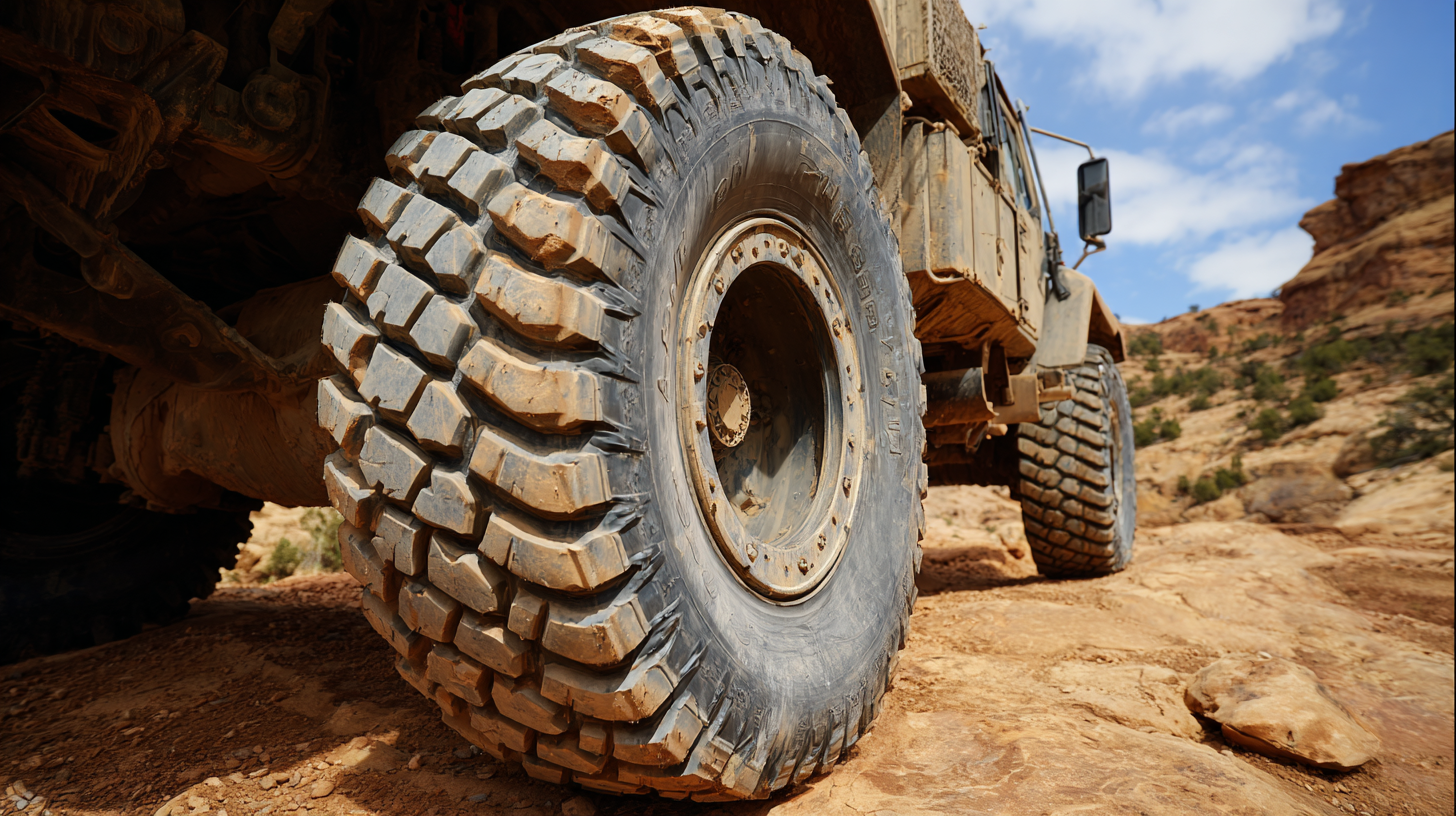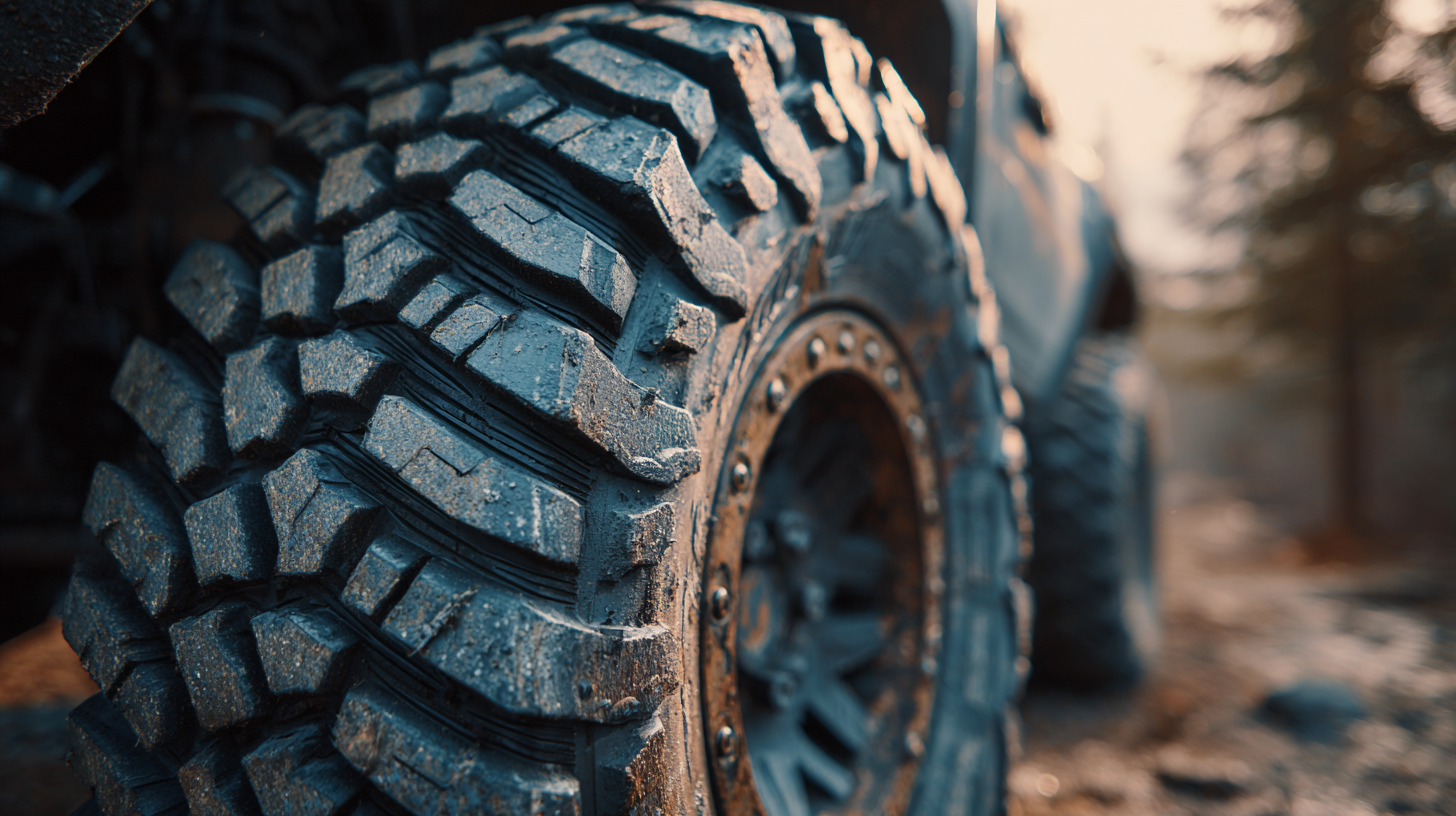When embarking on thrilling off-road adventures, selecting the right off-road truck tires is crucial for both performance and safety. According to the Tire Industry Association, off-road tires are specifically designed to endure the rugged terrains that conventional tires cannot, offering increased traction, durability, and flexibility in various conditions. A recent study highlighted that approximately 60% of off-road enthusiasts reported experiencing improved vehicle handling when equipped with high-quality off-road truck tires. This enhancement directly contributes to better maneuverability in challenging environments, such as mud, sand, and rocky landscapes. Understanding the intricacies of off-road truck tires, including tread patterns, sidewall design, and rubber composition, is essential for making informed choices that will elevate your off-road experience. As the demand for recreational off-roading continues to rise, equipped knowledge about off-road truck tires is an invaluable asset for any adventurer looking to maximize their thrill and safety on the trails.

When selecting off-road tires for your vehicle, understanding the different types available is crucial for optimizing performance in challenging terrains. All-terrain tires are a popular choice due to their versatility; they offer decent capabilities on both paved roads and rugged paths. However, if your adventures are more focused on extreme conditions, mud-terrain tires are specifically designed with deeper treads and larger lugs, providing superior traction in soft, muddy, or sandy conditions.
Another option to consider is rock-crawling tires, which are built to withstand harsh rocky environments. These tires typically have reinforced sidewalls to resist punctures, allowing for enhanced durability and grip during steep climbs and descents. This choice is excellent for enthusiasts who frequent mountainous terrains or off-road trails. Ultimately, selecting the right type of tire hinges on your vehicle, the specific conditions you plan to encounter, and how often you venture off the beaten path. Choosing wisely can significantly elevate your off-road experience.

When it comes to off-road adventures, understanding tire tread patterns is vital for maximizing performance and safety. Different tread patterns play specific roles in traction, handling, and durability. For example, aggressive, deep treads are ideal for muddy and rocky terrains, providing superior grip, while shallower treads are more suited for hard-packed surfaces, enhancing fuel efficiency and comfort. According to recent reports, the growing CUV/SUV tire market is a testament to the increasing demand for tires that cater to various driving conditions, emphasizing the importance of selecting the right tread for your specific needs.
Tips for choosing the right tread pattern include considering the primary terrain you'll be navigating. For muddy conditions, opt for tires with larger, widely spaced lugs. Conversely, for rocky trails, a tougher tire with reinforced sidewalls will offer better protection against punctures. Moreover, regular inspection and maintenance of tire pressure can prevent irregular tread wear, ensuring optimal performance.
Another important aspect is to be mindful of how your tire choice affects the environment. With innovations leading to lower eco-impact options, selecting tires that balance performance and sustainability is crucial. Understanding the wear patterns can also provide insights into your driving habits and potential mechanical issues, helping you maintain optimal tire health and longevity.
When venturing off-road, understanding tire pressure is crucial for optimizing traction and ride quality. Lowering tire pressure increases the tire's contact patch with the ground, allowing it to better conform to uneven surfaces such as rocks, mud, or loose sand. This enhanced grip is essential for maintaining control while navigating challenging terrains. However, it is important to balance pressure settings; too low can lead to tire damage or disengagement from the rim.
In addition to traction, tire pressure significantly influences ride comfort. A softer tire absorbs bumps and impacts more effectively, resulting in a smoother ride over rugged landscapes. Conversely, over-inflated tires may provide less cushioning, transferring more jolts to the vehicle and its occupants.
Understanding the optimal tire pressure for your specific off-road adventure can enhance both performance and comfort, ensuring a successful and enjoyable expedition. Always consider the terrain type and the full weight of the vehicle to adjust your tire pressure accordingly before hitting the trails.
When it comes to off-road adventures, maintaining your truck tires is crucial for both safety and longevity. Off-road tires endure extreme conditions, from rocky terrains to muddy trails, which can wear them down faster than regular tires. One of the most effective ways to extend the life of your off-road tires is by regularly checking tire pressure. Maintaining the correct PSI ensures optimal traction and prevents unnecessary wear. Additionally, inspecting for any signs of damage, such as cuts or punctures, is essential before embarking on any trip.

Another key factor in maintaining off-road tires is proper cleaning. After a day of adventurous driving, mud and debris can accumulate, leading to premature wear. Washing your tires with water and mild detergent can help remove harmful substances that might degrade the rubber. Rotating your tires regularly ensures even wear and can improve overall performance. Finally, investing in a quality tire sealant can provide an additional layer of protection against leaks and punctures, keeping your off-road expeditions safe and enjoyable.
When embarking on an off-road adventure, understanding tire wear is crucial for safety and performance. Off road truck tires are designed to withstand rugged terrains, but they are not invincible. Regular inspection for signs of wear can prevent unexpected breakdowns during your journey. Look for uneven tread wear, which may indicate alignment issues or that your tires are not suitable for the specific type of terrain you are traversing. Additionally, pay attention to any cracks or bulges on the sidewalls, as these can compromise tire integrity and lead to failure.
Knowing when to replace your tires is vital. A common rule of thumb is to replace tires when the tread depth reaches 3/32 of an inch; this is particularly important for off-road conditions where traction is essential. Beyond tread depth, consider the age of the tires; most manufacturers recommend a replacement every six to ten years, regardless of tread wear. Regularly maintaining your tires and being aware of these signs not only enhances your vehicle’s performance but also ensures a safe and enjoyable off-road experience.
This chart illustrates common indicators of tire wear that drivers should monitor. A tread depth of less than 4/32" suggests replacement is necessary, while the presence of cracks or bulges indicates potential tire failure. Sidewall damage and tire age (over 5 years) are also critical factors to consider in maintaining safe driving conditions during your off-road adventures.






Reignite your passion for driving with Yokohama tires and experience the superior performance you deserve.